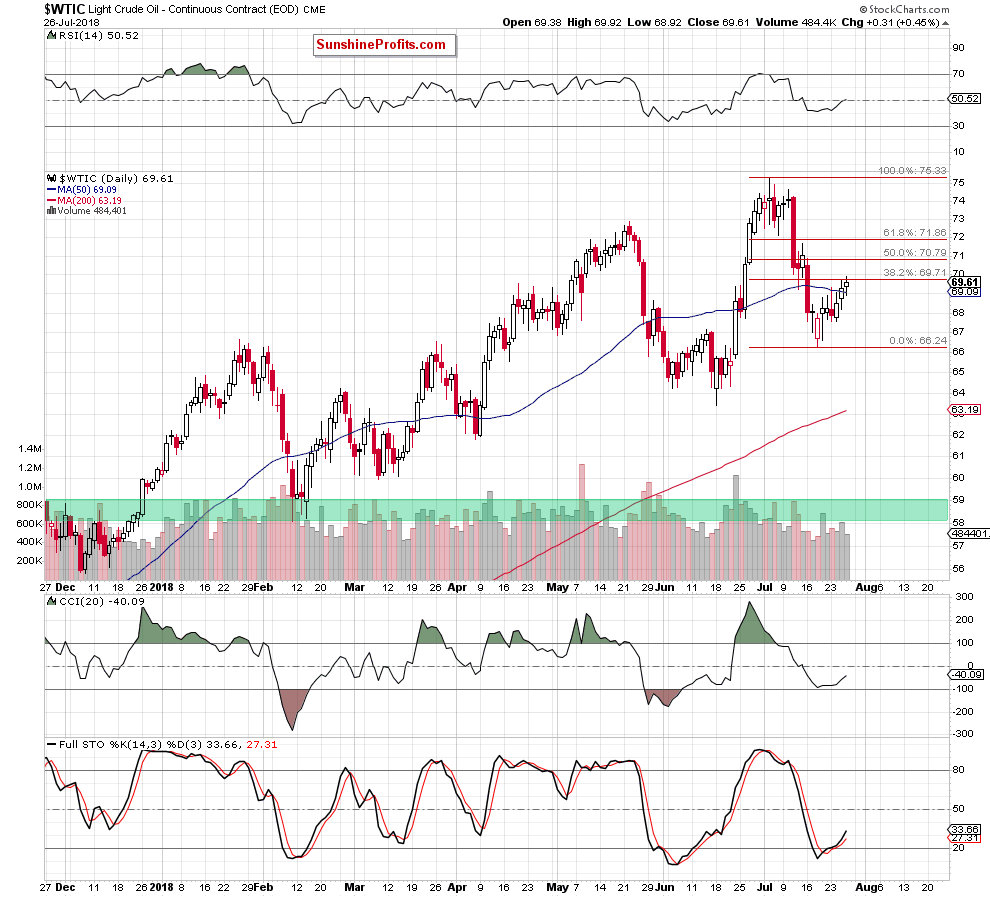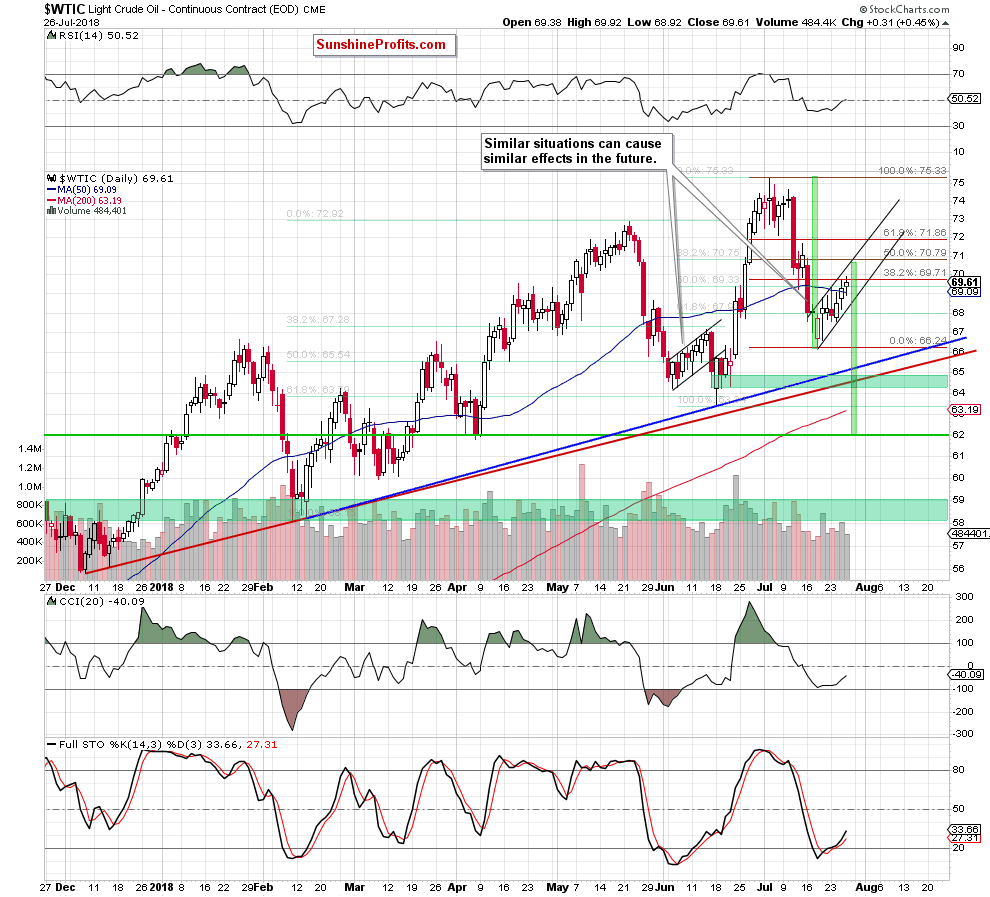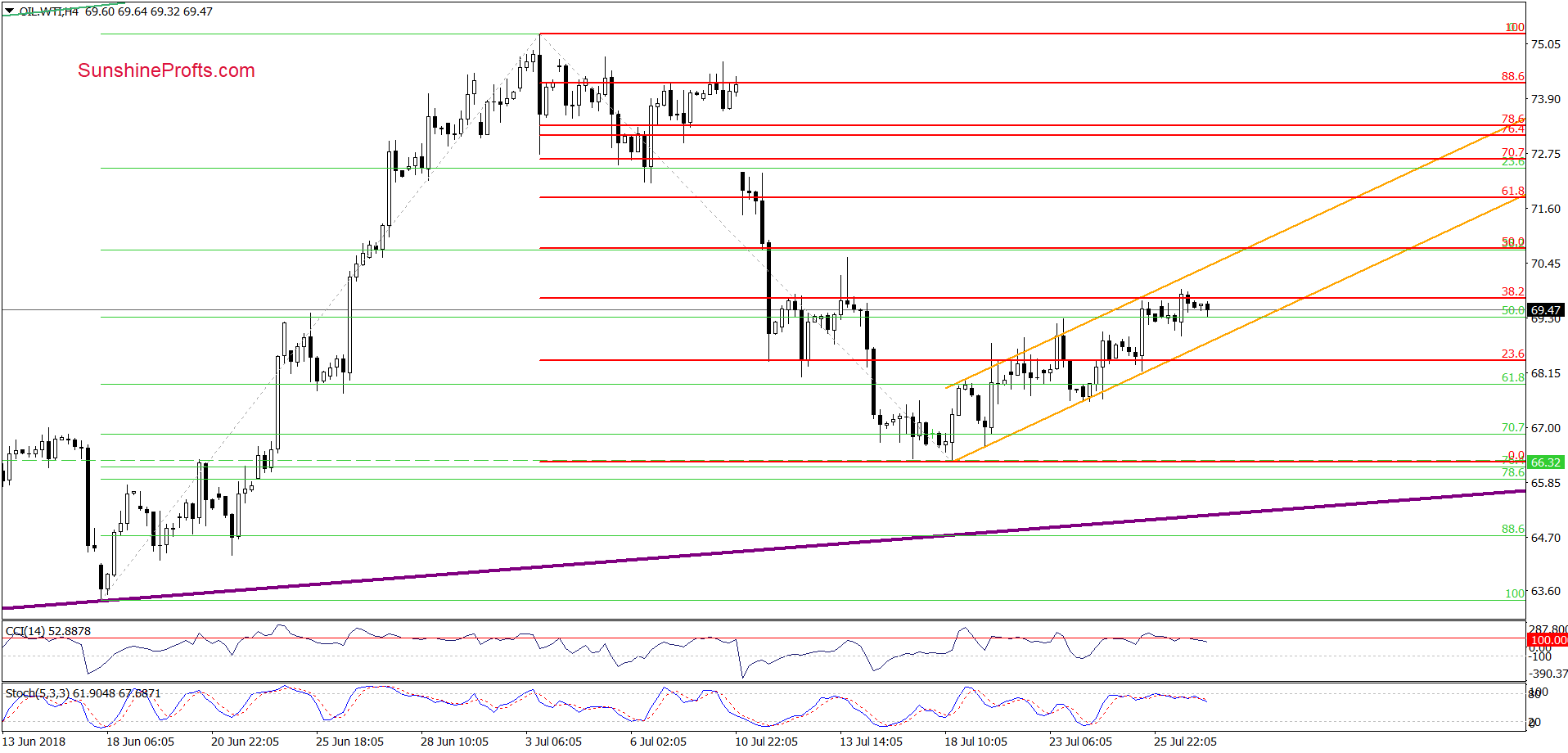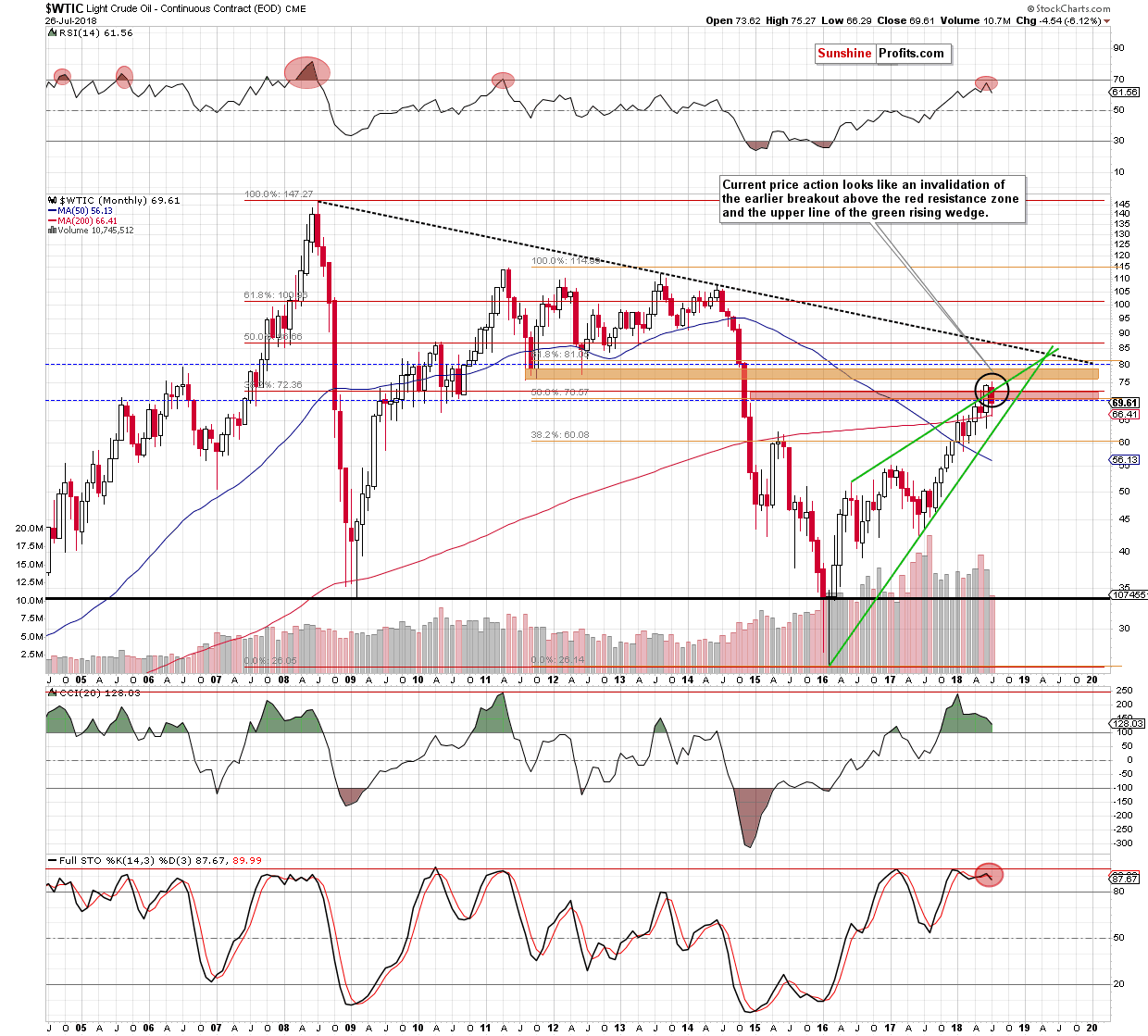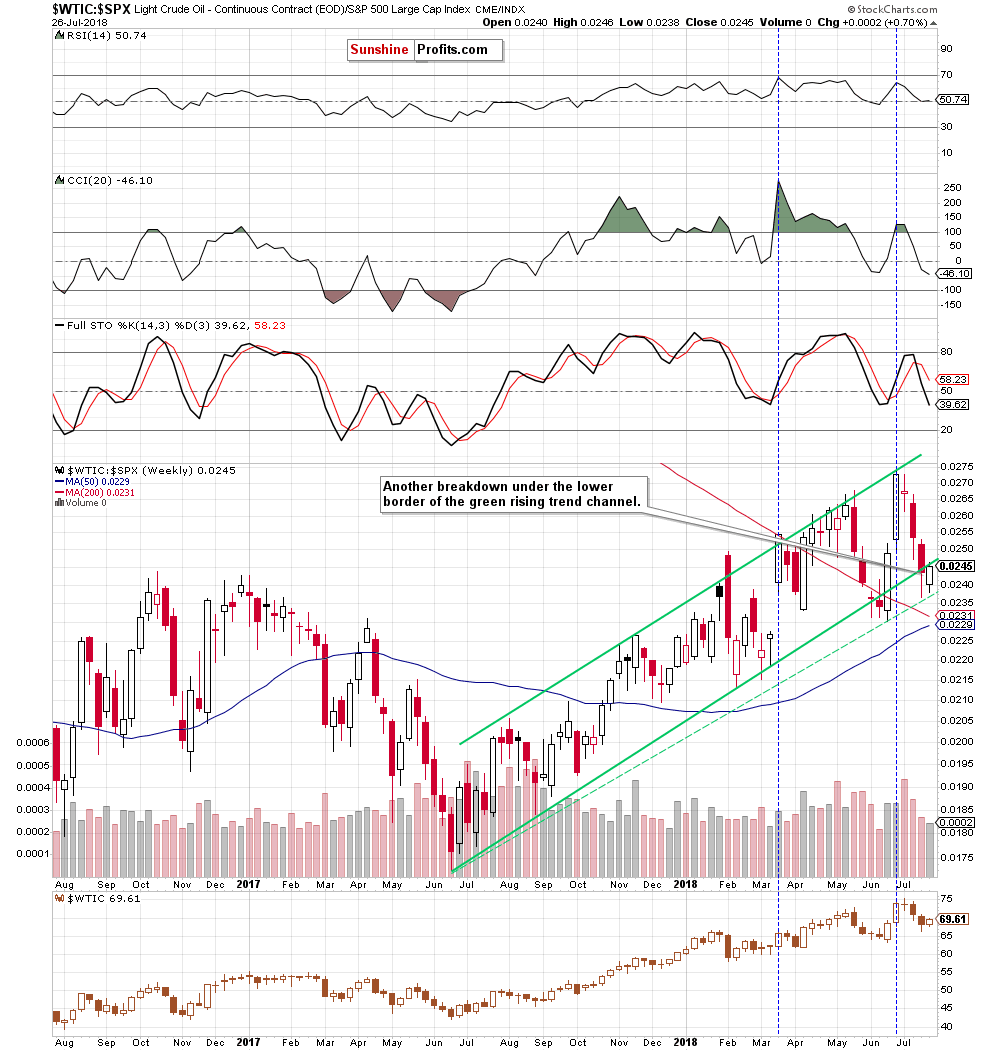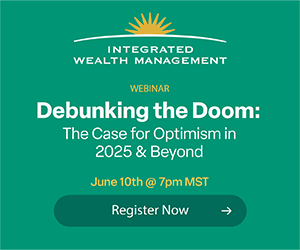Bonds & Interest Rates
 Take a Deep Breath
Take a Deep Breath- Too Much Protection
- Behind the Door
- Cracks in the Wall
- The Best Strategy for the Great Reset
- Grand Lake Stream, Maine and Moving On
We are all on a debt-filled train that is eventually going to crash, and if you are on it, it won’t stop to let you off first. Jumping at the last minute is not a good option, either. So what do you do? You take action now, while you have time.
Last week I gave you some rules to follow with your investments. They were necessarily general because I’m writing to a broad audience. Today, I will get more specific by discussing some possible strategies for high-net-worth “accredited investors.”
However, you should read this important information even if you aren’t wealthy. You might get there someday and it will help prepare you for it. “Someday” could be sooner than you think, too. The Great Reset will rearrange much of the world’s wealth and some people will see their financial condition change quickly, either for worse or better. There will be some enormously positive opportunities.
And as we will see, many strategies that are currently available only to accredited investors are slowly showing up in lower-cost, publicly accessible ETFs and other instruments around the world. There is truly a fintech-driven revolution going on in the financial industry. For we who make our living in that world, the changes seem to intensify almost daily. As I will discuss at the end of this letter, these changes are forcing me to update my own business model. So opportunities not available to you today may very well be available next quarter or next year. You and your advisors need to stay in the loop.
The broader point: Whatever our current circumstances, we can all do things to prepare for the radically different world I think will unfold in these years. You need to make the most of what you have. I want to help by meeting you where you are. Fortunately, I have multiple ways to do that, as you’ll see below. Stick with me and we’ll get through this together.
Take a Deep Breath: It’s Going to Get Better
Now, I know I have used a train wreck metaphor for this series. That sounds pretty bad, doesn’t it? And the portfolios of most investors truly will look like they have gone through a train wreck. But you don’t have to be one of them.
The world itself is not going to be a train wreck. The world will be much better in 20 years, and in many ways even in 10 years.
- We will still be eating—both going out and cooking in—and that means there will still be agriculture and ways to bring that food to you. Now, the way your food is grown and harvested and delivered to you may very well change. That will happen in the background. You just want your food to show up when you’re hungry, be well prepared, taste fabulous, and keep you healthy.
- We will still get together with friends. Travel will be easier, communications will be cheaper and faster and better.
- I can’t even begin to explain how much better healthcare and biotechnology will be. I’m willing to bet a considerable sum that cancer will have been reduced to a nuisance in 10 years, but I really think it’s more like five years. Other mind-boggling treatments are coming. Nobody will want to go back to the good old days of 2018.
- We will have fantastic investment opportunities in this new world. There will truly be massive fortunes made and you will have the chance to participate. And while I’ve talked about the disappearance of many jobs, most workers will adapt and survive. New jobs will appear, although some of us old dogs may have to learn a few new tricks.
In short, I am an optimist about the future but a realist about our portfolios. Business (and investment) as usual is not going to cut it. If you are holding the traditional 60/40 portfolio, thinking it will get you to the other side of The Great Reset, I think you will be disappointed.
My goal—and it is a deeply personal, almost spiritual quest—is to help my friends and readers reach that brighter future with their spending power intact in a very tumultuous economic and financial world.
Let me put it this way. Imagine I had come to you in early 1929 and told you about the Great Depression. If you believed me, you would have changed your life and your investments, preparing to protect your assets and take advantage of opportunities.
So I’m whispering now. Get prepared. We have time. Shane and I are making rather large changes ourselves, actually eating my own cooking, so to speak. This isn’t just theoretical to me.
With that said, let’s jump into the letter.
Too Much Protection
Ideally, the investment process for two otherwise similar people would be much the same whether each has a little money or a lot. The only difference would be the number of shares they own. Unfortunately, it is not that simple.
One reason: The government tries to protect small investors from making mistakes or being defrauded. That’s not entirely bad. I am actually a believer in financial regulation. Swindlers frequently prey on the uninformed and desperate. But in the US, our laws do it by making certain kinds of investments available only to “wealthy” people.
You may have heard the term, “accredited investor.” This means certain kinds of businesses, or individuals with:
- Net worth over $1 million, excluding the value of their primary residence, or
- Income over $200,000 in two of the last three years (or $300,000 with spouse) and reasonable expectation of same this year.
If you qualify by either of those standards, it is sort of like unlocking the next level in the video game your kids play. You can now enter new territory forbidden to others.
Note the assumption here: If you have this minimal amount of wealth or income, you are financially sophisticated and no longer need the kind of protection government gives the masses. This assumption is often wrong. We all know people who don’t have much capital or income but possess extensive financial expertise. There are also wealthy people who are, shall we gently say, naïve about money. Our regulatory structure gives too much protection to some and not enough to others. But it’s what we have so we must deal with it.
Behind the Door
So, what lies beyond the secret door that being accredited allows you to pass? Even those who qualify don’t always know. That’s because, in addition to forbidding banks and brokers from selling these investments publicly, the law sometimes says they can’t even talk about the investments publicly. Wealthy people often miss out on possibly great investments because they never hear about them. They, or their brokers and advisers, aren’t in the “deal flow.”
Some incredible deals (I see them all the time) actually aren’t that large, so the large “wire house” firms ignore them. They have so many brokers with so many clients, they stick with bigger offerings.
Regional brokers who can take the “smaller deals” are pretty jealous about their own deal flow. Many private deals are gobbled up by family offices and pension funds too quickly for the rest of us to get a chance.
As an aside, I’m a real fan of private credit and believe in the future it will be even bigger than private equity. Banks are being forced out of their traditional role of providing credit to businesses; and entrepreneurs are stepping in to provide it. Here again, access to deal flow is important.
The most common opportunities are in unregistered securities—shares of stock that don’t trade on exchanges and haven’t gone through the normal IPO process. An initial public offering is usually preceded by one or more privateofferings in which wealthy investors can buy a company’s shares. Sometimes you hear about them because the companies are large and well-known. Uber, for instance, is a private company whose shareholders are all large investors and funds. They don’t have to file the kind of quarterly and annual reports required of publicly traded companies. Thousands of smaller start-ups have similar status.
It is not the case that all these companies are great investments. Many are not. But you can’t get to the attractive ones unless you are an accredited investor. Many gain exposure by investing in a venture capital fund, which gives you professional management and additional diversification. And diversification is important in these types of investments, as many fail and go bankrupt. Are Uber and Airbnb worth their last valuation round? I have no idea. We will find out one day.
Private equity is a similar category but typically involves more mature companies. You sometimes hear about a public company “going private” and delisting from the stock exchange. This usually means a group of investors bought all the shares, intending to restructure the business once it is out of the spotlight. You can be one of them if you’re accredited, either directly or through a private equity fund.
You really have to know who you are working with on private equity funds. Many use leverage that makes them riskier than they should be. These are for sophisticated investors who have deep pockets and even better advisors. There are as many varieties of private equity funds as there are breeds of horses, to use an odd analogy. But just as few of us would consider ourselves knowledgeable about horses, even fewer are knowledgeable about private equity funds. Don’t let your investment pay for your college tuition in private equity.
Hedge funds are another common accredited-only investment. The term is a bit misleading because many hedge funds don’t hedge. I prefer to call them “Private Investment Funds.” They work a bit like mutual funds, in that investors pool their money together under a professional manager’s guidance. But because the investors are all “sophisticated,” hedge fund managers have more discretion and far less oversight than mutual fund or ETF managers. That can be great if you are in the right one, but finding them is a challenge. I have spent much of my career helping investors do this and I still run across great funds I never knew about.
Full disclosure: somewhere north of 20% of my personal investments are in what is typically classified as hedge funds. I favor diversified trading funds and generally (though I’ve made exceptions) don’t invest in the classic Jones model “long/short” hedge funds today, because I think the alpha they once had has dried up for the time being.
Hedge funds (or whatever you call them) cover a bewildering range of asset classes and investment strategies. Someone out there has a fund doing anything you can imagine, in any part of the world you can imagine. Right now, it seems like everybody’s putting together new crypto currency hedge funds. Cannabis is hot (and for good reason). I have always liked “distressed” hedge funds that buy unwanted assets at ridiculously cheap (at least in hindsight) prices. A patient team of turnaround artists can unlock the real value. It is an art form and some of the most storied names on Wall Street are so-called grave dancers. But their clients are very happy.
I mentioned private credit above, but that was generally about smaller loans. Some large hedge funds are essentially banks and can do very large deals indeed. Typically, they use about two times leverage and your capital will have at least a three-year lockup period. Never invest in a private credit deal that offers deep liquidity but lends long term. The initial returns may look enticing, but if there is ever a “run” on the fund it can collapse overnight. The terms of the investment capital and the loans should be roughly equal. You don’t want there to be a recession where everybody starts trying to withdraw their capital, forcing your fund to sell loans at ridiculously low prices to those distressed debt funds.
While I can’t mention the fund’s name, a very large fund marked down their portfolio well over 20% during the last credit crisis, but not one client lost money. They were all locked up. By the time the crisis ran its course, the loans had regained their value and everybody got paid and made the returns they expected to begin with. Capital and credit were properly aligned.
This is why you need sophisticated advisors to navigate this world. It is not for rookies. While hedge funds can be rewarding, many are complete disasters. As they say on TV, don’t try this at home, boys and girls.
That being said, look for funds where management has an edge that is not correlated to the market. There are more than you might imagine. This is what I mean when I say diversify trading strategies, not asset classes.
Real estate is another investment area increasingly dominated by accredited investors. I like income real estate that is not loaded down with leverage. I don’t personally own any, although my wife owns a few rental homes in her hometown. I watch from afar, as dealing with renters and contracts and all that is just too much trouble for me. Then again, I know people who have made serious money by patiently buying and renting homes over decades.
I don’t want to write a book about hedge funds (I did that some 15 years ago). They have a lot of drawbacks and many are just asset-gathering schemes to make money for management. Fewer than 20% of the funds out there would make it through my filters, and a fraction of those actually get my approval.
Cracks in the Wall
As you can tell, the current situation makes investment planning a lot more complicated for those with substantial assets. You have more options to consider. But those same assets also let you hire expert advice, which is definitely a good idea. I think almost all investors should have one or more investment advisors. Plus, read all you can from trusted sources. (Small plug: I hope one of those is Mauldin Economics.)
However, in the bigger picture, investment democracy is trying to assert itself. Bankers and marketers are finding ever-more-innovative ways to make products available to a wider audience. Strategies once found only in private hedge funds now exist in mutual funds and ETFs anyone with a few thousand dollars can purchase.
We also see venture capital and private equity increasingly held within otherwise conventional mutual funds. Regulators permit it so long as these illiquid securities represent only a small portion of the fund’s assets.
I suspect we’ll see these moves continue and governments should actually encourage them, simply out of self-defense. I’ve written a lot about pension problems and people not having sufficient retirement savings. The main reason is that neither workers nor employers are contributing enough… but it doesn’t help that investment returns are miserably low, too. Locking people out of the best opportunities simply “protects” them from building the assets they need to fund a comfortable retirement. It makes little sense and needs to change.
In my own small way, I’m trying to help. At Mauldin Economics we have a crack team of editors who can show you how to take advantage of today’s best opportunities. You heard some of them in the special reports “Bull or Bust” videos we published this month. Jared Dillian, Kevin Brekke, Patrick Cox, and Robert Ross shared some ideas useful for investors at all levels.
I’ve received quite a few emails from folks who missed out on some of the special reports from last week, and this week’s presentations. We did have to be strict on the time limit for Bull or Bust. But don’t worry if you missed out on the three special reports, four presentations, and trade recommendations. On Monday, we’ll be sending a very special invitation to you. If you accept, you’ll get permanent access to Bull or Bust as a thank you. Please stay tuned.
The Best “Strategy” for The Great Reset
We all want our portfolios to perform as well as possible. But simple reality says that apart from a lucky few who find an investment that really takes off and propels our total net worth, most of us need more.
Where is net worth truly created? Small businesses, often generational, some of which become medium and large businesses. More people have made more money all over the world by starting businesses than any other way. Their businesses will go through The Great Reset, maybe not in perfect ease, but come out the other side still generating profits for their owners.
Very few places are more open to entrepreneurs than the US but this happens everywhere. The bulk of the wealth created in China? New businesses. Of course, oligarchies in many Third World countries make launching new businesses tres difficile. Starting a business isn’t easy anywhere and most new businesses fail. Do your homework, make sure you have enough capital and consider taking the leap.
And if you are not the entrepreneur type? Then link up with someone who is, make him or her successful, and be sure you get a piece for your effort. With so many new business opportunities and technologies coming, there have never been more options. Look around at what you know and think how technology can make it better. Then create it. And when we’re together, tell me your story.
Grand Lake Stream, Maine and Moving On
Next week I once again journey to Camp Kotok at Grand Lake Stream, Maine. I will visit with old friends, make some new ones, talk economics and investments and try not to let the fishing get in the way. I think this is my 13th year and it’s always a wonderful reunion. I will have a report when I get back.
I mentioned above how I was making some changes. I too want to make sure that when we get to the other side of The Great Reset, I have as much of my capital intact as possible. As part of this, I am selling my apartment in uptown Dallas and making some other lifestyle changes.
Nobody should feel sorry for me. It’s just a new part of the adventure. However… if you are interested in a fabulous high-rise apartment with 270 degree views of Dallas, click here. (By the way, selling a home is high-tech now. Soon you will be viewing homes via augmented reality sets. It is pretty cool technology.)
I mention that mostly to show I am really serious about this getting-your-life-in-order thing. I am as “all in” as anyone can be. And while you know what we’re doing at Mauldin Economics, I’m also making changes in my advisory and brokerage businesses. I want to help as many people as I possibly can, in as many ways as I possibly can. That means helping advisors and brokers help their clients. The technology to do this didn’t exist even a few years ago.
I am committed to helping you. I seriously consider my readers to be my million closest friends. It’s more than a cute phrase to me. I am optimistic we will have more fun and better lives in the future if we make the right changes today. I’m right there with you.
And with that, it is time to hit the send button. Have a great week!
Your live-long-and-prosper analyst,

|
|
John Mauldin
|


The latest Housing and Mortgage Market in Canada report by Mortgage Professionals Canada revealed that stricter government measures are pushing consumers towards a more negative outlook for housing and real estate nationwide.
In particular, the study pointed at increasing interest rates and tighter mortgage qualification requirements as the main factors eroding Canadian consumers’ sentiments, despite many respondents still indicating a belief that real estate remains a good investment.
“We are still seeing a high level of desire in home-buying, especially among young people aged 25-34,” MPC president and CEO Paul Taylor said. “Whether they will be able to make that purchase may be an entirely different matter.”
Read more: Property investment in Canada still showing robust activity, demand
“We support a stress test, albeit at a reduced rate of 0.75%, as it is a useful tool to test a borrower’s ability to make future payments,” Taylor added.
“However, the cumulative impact of rising rates, a 2% or greater stress test, provincial government rules in Ontario and British Columbia, and further lending restrictions are negatively supressing housing activity not just in Toronto and Vancouver, but throughout the country.”
The report warned that federal policies which would lead to a decline in housing prices will trigger a reduction in home equity, thus further wearing down consumer confidence and leading to shrinking spending, slower economic growth, and reduced jobs creation.
Related stories:
Vancouver wage levels aggravating housing woes
Non-Toronto markets in Ontario see accelerated home price growth

 Big oil is back, and we have earnings today but so is big LNG. OK, maybe the market for Liquefied Natural gas isn’t big yet but it is going to be. President Donald Trump boasted that “Europe will be a massive buyer of U.S. LNG as they will be able to diversify their energy supply.” Some dismissed the comments as not likely, but those who did are thinking small or not looking at the big picture. In coming generations, the United States will be the LNG supplier to the world.
Big oil is back, and we have earnings today but so is big LNG. OK, maybe the market for Liquefied Natural gas isn’t big yet but it is going to be. President Donald Trump boasted that “Europe will be a massive buyer of U.S. LNG as they will be able to diversify their energy supply.” Some dismissed the comments as not likely, but those who did are thinking small or not looking at the big picture. In coming generations, the United States will be the LNG supplier to the world.
On Mornings with Maria on the Fox Business Network, Energy Secretary Rick Perry spoke from the opening of the Dominion Energy Cove Point (DECP) LNG Liquefaction project. He pointed out that this was the opening of just the second LNG facility and that there will be four more on the way.
He pointed to phenomenal growth in the industry and pointed out that Europe needs U.S. natural gas as a strategic alternative to Russia. He also set a veiled shot to Europe by saying that Carbon Emissions in the United States fell by 14% because of U.S. natural gas usage even as Trump pulled out of the Paris Climate Accord. He also pointed out that we havephenomenal growth in production. Rick Perry with Maria from Dominion Energy Cove Point (DECP) LNG Liquefaction project points out that the United States will be a reliable supplier. Russia halted Natural gas exports as a political weapon in the past, so Europe is making a smart move getting ready to be a big buyer of U.S. LNG.
The EIA reported that working gas in storage was 2,273 Bcf as of Friday, July 20, 2018, according to EIA estimates. This represents a net increase of 24 Bcf from the previous week. Stocks were 705 Bcf less than last year at this time and 557 Bcf below the five-year average of 2,830 Bcf. At 2,273 Bcf, total working gas is within the five-year historical range. Tight range and needs more heat to keep the rally going. Use strength to buy long-term puts.
Look to RBOB for oil support. There seems to be a squeeze on RBOB as we head into expiration with near record demand and supplies are getting too close to the 10 year average.


Recent days were good for oil bulls. Thanks to their action, the price of the commodity came back to around $70 and one of the daily indicators even generated a buy signal. Did the outlook turn to bullish? In our opinion, it didn’t. Furthermore, it seems that a fresh July low is still ahead of us. Why? The answer is quite simple – an analogy to the past.
Let’s take a closer look at the charts below (charts courtesy of http://stockcharts.com).
Technical Picture of Crude Oil
Click Chart For Larger Image
Looking at the above chart, we could summarize it with only three words: nothing has changed. Why? Because although crude oil increased a bit, it is still trading under the 38.2% Fibonacci retracement.
Nevertheless, if we draw a few additional lines on this chart, mark technical formations invisible at first glance with their ranges and compare the current situation to something that we have already seen in the past, our chart will become much more interesting. See for yourself.
Click Chart For Larger Image
Were we right? We hope that the answer is yes. So, what can we read from the above chart about the future of black gold?
From this perspective, we clearly see that crude oil is trading inside a very short-term black rising trend channel, which reached the mentioned 38.2% Fibonacci retracement during yesterday’s session for the second time in a row.
What does it mean for the price of light crude?
Let’s start with a quote from yesterday’s alert:
(…) Despite this climb, this first resistance triggered a pullback, which suggests that as long as it remains in the cards higher prices of black gold are not likely to be seen and one more move to the downside should not surprise us in the coming days.
Is this quote still valid? Definitely yes.
Additionally, yesterday’s upswing materialized on the smallest volume since July 18 (the beginning of the current rebound), which raises some concerns about the strength and condition of oil bulls – especially when we factor in another unsuccessful attempt to go above the 38.2% retracement.
Since we have already mentioned the very short-term black rising trend channel, let’s analyze it more closely. As you see on the daily chart, although crude oil extended its rebound in recent days, it is still trading inside this formation, which means that as long as there is no breakout above the upper line of the channel, further improvement is questionable.
At this point it is worth noting that we saw several unsuccessful breakouts in the narrower perspective. Let’s take a look at the 4-hour chart below.
Click Chart For Larger Image
As you see, although oil bulls pushed the price above the upper border of the channel in previous days, all these improvements were very temporary, which means that their opponents kept an eye on this important line.
Additionally, earlier today, the CCI and the Stochastic Oscillator generated the sell signals, increasing the likelihood of lower prices later in the day.
However, before we start talking about the downside targets, let’s go back to our technical formation and its implications.
Potential Flag Formation Underway
On the daily chart, we see that entire July price action looks like a potential flag formation. The pattern started with a short-lived consolidation, then accelerated sharply on July 11 (that day the buyers had to cover their long-positions to avoid losses as more sellers came in off the fence) and rebounded slightly only to fall even lower in the following days.
In this way, oil bears formed the flagpole (marked with the first green rectangle), which is currently followed by an orderly rebound (the mentioned very short-term black rising trend channel), which forms the flag.
That sounds interesting, but what does this mean for oil?
For those who do not know yet, we explain that flags are continuation patterns. This means that if oil bears show their claws once again and manage to break below the lower border of the very short-term black trend channel, the next leg of the downside trend will begin, and we’ll see lower prices of crude oil.
What will be the initial downside target of the mentioned flag pattern?
Those of you who are interested in commodity/financial markets probably heard the idea that “the flag flutters in the middle of the flagpole”, which means to us that it occurs in the middle of the entire downward move. Therefore, to predict the forecast price level we should measure the size of the flag pole (we marked it with the first green rectangle) and then subtract it from the top of the flag.
Thanks to this method we see that crude oil could decline as far as to around $62 (the second green rectangle) to complete the whole formation. In this area, there is also the support zone created by April lows, which could attract oil bears like a magnet.
Nevertheless, to see black gold at this level, the sellers will have to break under the blue and red rising support lines (lower borders of the rising trend channels seen on the daily chart attached in yesterday’s alert) and the green support zone based not only on these lines, but also on June’s lows, which may not be a very easy challenge.
Why? At this point, the time has finally come to go back to the past.
Looking at the daily chart, we see that a similar price action to the one we are currently observing took place in the first half of June. Back then, the price of crude oil also bounced north (moving in a similar growth channel) after quite strong declines, and then fell to a fresh low. Despite that price action, oil bears didn’t manage to trigger further deterioration as the proximity to the red support line and the 61.8% retracement encouraged their opponents to act.
Taking the above into account, we believe that even if the sellers do not manage to push the commodity to around $62, we’ll see (at least) a fresh July low and a test of the nearest support zone (marked with green) in the coming week.
Long-term Factors
The pro-bearish scenario is also reinforced by two important negative developments seen more clearly from the broader perspective. Let’s examine the monthly chart below to find out what we mean by that.
Click Chart For Larger Image
Looking at the above chart, we see that although crude oil bounced off the 200-month moving average earlier this month, the commodity remains under the previously-broken red resistance zone (created by the two important Fibonacci retracements) and the upper border of the green rising wedge.
This means that an invalidation of the earlier breakouts and its negative impact on the price of light crude are still in effect, suggesting that if we see a monthly close below the mentioned resistances oil bears will get one more important reason to push black gold lower in the coming month(s).
In our Wednesday Oil Trading Alert, we also focused on the relationship between crude oil and the general stock market. Has anything changed since then?
Crude Oil – General Stock Market Link
Click Chart For Larger Image
Not really, because although the oil-to-stocks ratio rebounded, it still remains under the previously-broken lower border of the green rising trend channel, which looks like a verification of the earlier breakdown.
Therefore, if the situation develops in tune with our assumptions and the ratio declines once again, we’ll likely also see lower prices of crude oil in the following days as a strong positive correlation between the commodity and the ratio is still in the cards. The pro-bearish scenario is also reinforced by the position of the indicators as the sell signals generated by the CCI and the Stochastic Oscillator continue to support the sellers.
Summing up, profitable short positions continue to be justified from the risk/reward perspective as the short-term outlook remains bearish (two unsuccessful attempts to break above the 38.2% Fibonacci retracement, a potential flag formation, similarity to the past, a potential invalidation of the breakouts seen from the long-term perspective, current situation in the oil-to-stocks ratio), favoring oil bears and lower prices of crude oil in the coming week(s).
If you enjoyed the above analysis and would like to receive daily premium follow-ups, we encourage you to sign up for our Oil Trading Alerts. Sign me up.
Thank you.
Nadia Simmons
Forex & Oil Trading Strategist
Przemyslaw Radomski, CFA
Founder, Editor-in-chief, Gold & Silver Fund Manager

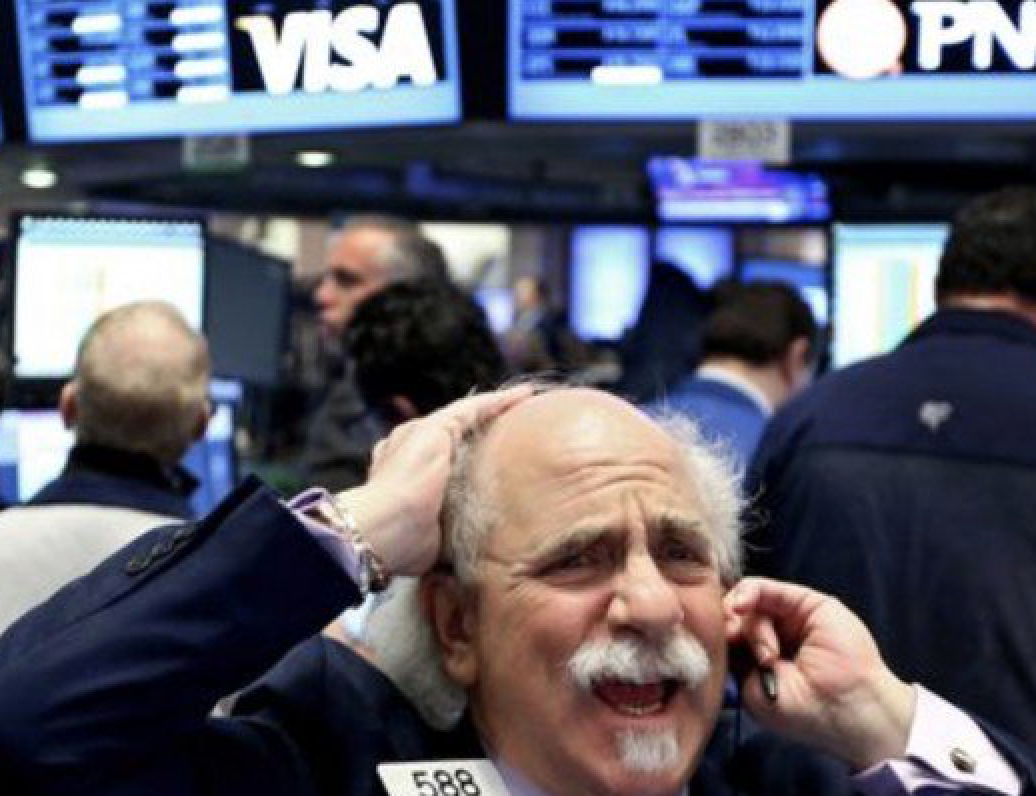 With stocks surging and the US dollar rebounding, one of the legends in the business said, “The shorts began to panic.”
With stocks surging and the US dollar rebounding, one of the legends in the business said, “The shorts began to panic.”
A Short Panic
Here is a portion of today’s note from legend Art Cashin: The stock market painted a beautiful picture yesterday but that wasn’t truly evident until the final thirty minutes in trading.
Apparent Tariff Truce Spooks The Shorts – Stocks began the Wednesday session in a rather shaky fashion.
The Dow weighed heaviest in the early trading and that was due to two specific components.
also from King World News”
Celente Just Issued A Major Trend Alert For Gold & The Stock Market




